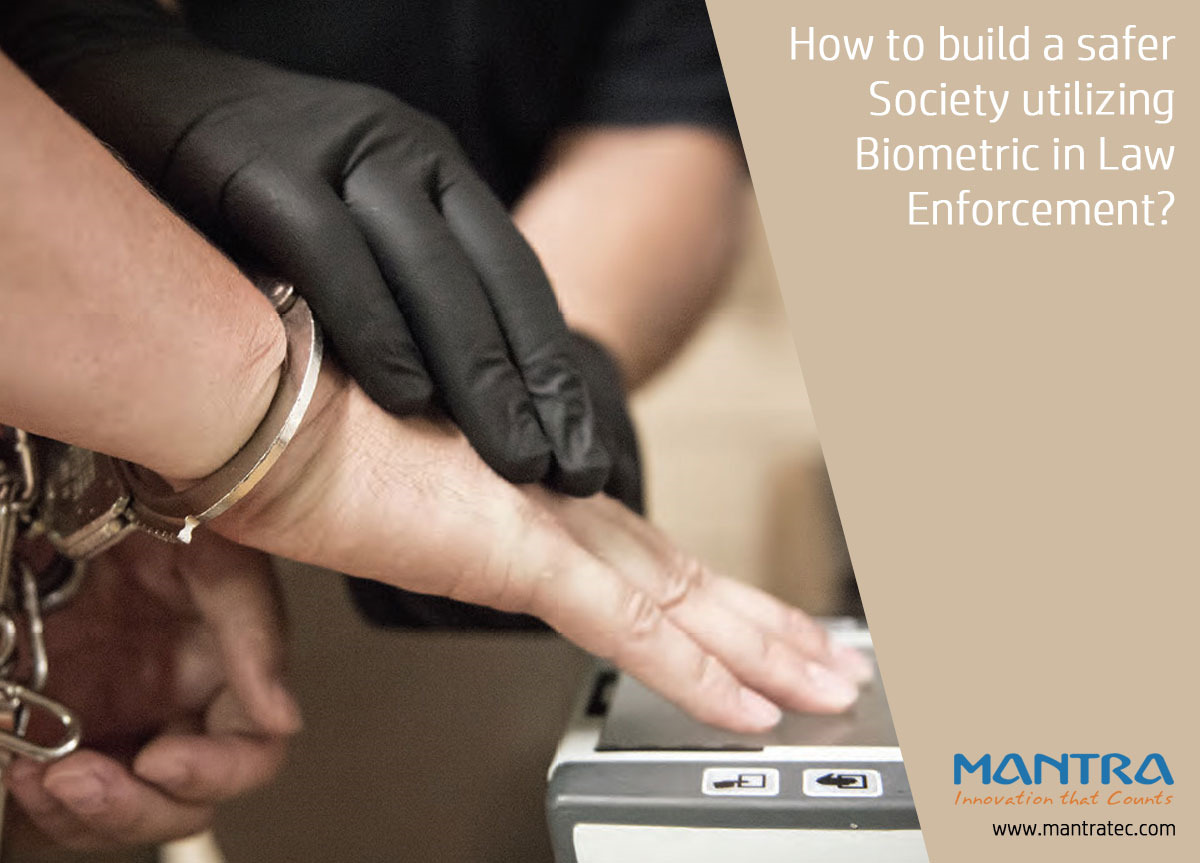
Over the past few centuries, multiple countries had been experiencing de facto demand for Biometrics technology in the system of laws. Growing crimes, soaring lawbreaking activities and fostering criminal mind creates a lot of trouble for the law enforcement authorities. Eventually, introduction of Biometrics technology into legal constitution proved to be advantageous and valuable. Exceptional progress has been recorded in the mid-twenties as during that time the fingerprint impression collected from the crime scene used to be matched with the person under arrest utilizing Biometrics. The state-of-the-art technology was thus utilized to identify the unveiled fingerprint impression taken from the crime sight.
As the Biometric Technology evolves, accurate and on-the-go identification of the wrongdoer or the accused falls within the realm of possibility through their physiological attributes such as fingerprint, iris and face detection. The revolutionary Biometric machines are not only designated for the investigation of the crime but are ubiquitous that are applicable in various segments from the protection of smartphones via fingerprint locking and unlocking to track the time and attendance, and a lot more.
Importance of Biometrics in Law Enforcement
Talking about Biometrics, it is essential to understand first the conceptual relation between Biometrics technology and law enforcement. Law enforcement is a course of direction or action laid down by governing authority of any Country to keep an eye on illegitimate activities in the province and maintain law & order in the society. Controlling criminal activities requires an error-free human verification system that can support the law officials in identifying a culprit with just one tap and maintaining the criminal record. Biometrics performed thick and fast to fit in the box by rendering an accurate criminal identification system to control all legal applications.
Countries with a large population need state-of-the-art Biometric technology to form a well-defined and reliable body of law. Recently, the Scottish Government has consolidated a plan of action to employ the system of Biometrics for legal code in its agenda. In 2017, the FBI framed the Biometric Centre of Excellence to maintain a database based on facial identification for the body of laws.
Nations falling under the realm of the Asia Pacific such as India, Thailand, China, and Indonesia are expecting to enact Biometrics technology in the domain of law enforcement principally Border control security and National Identification.
Implementation of Biometrics in Law Enforcement
Biometrics is deemed to be an icing on the cake for law enforcement offering the additional frontline advantages in crime detection and investigation, identifying the swindler, tracking the offender and much more. In present-day, governments are ready to spend money on reliable, precise, smarter and faster technology to strengthen the public safety operations. And Biometrics is capable to serve a strong and accurate solution in this arena.
Looking at the level of concern expressed by the legal officers to pursue and classify the felons, Government in many Countries are green-lighting Biometrics technology to enter the doors of the Law Enforcement Database. There are numerous applications of the Biometric system in regulating multiple actions that are carried out with the imposition of penalties. On-the-spot identification is the major breakthrough in the process of identifying an accused.
Keeping a keen eye on each inmate can be onerous, especially in a massive prison with a lot of prisoners. On the other hand, security of those who are awaiting the trial or amounted to sentence is one of the major concerns for every prison. Luckily, Biometric machines utilizing fingerprint and iris sensors can assist the prison agencies in preserving law and order within the walls of a lock-up.
Biometrics technology is beneficial in several policies fabricated for society, for instance, on-the-go identification of a driver during a drunk and drive case, loud-noise violations, routine traffic violation and likewise. Such revolutionary technology is not only used to maintain the criminal record but also to identify the missing kids or adults by utilizing their fingerprint impression or iris recognition. Accordingly, Biometric devices can be sanctioned at different places to abolish crime and illegal practices.
Applications of Biometrics in Law Enforcement
Biometrics can be widely used in law enforcement right from maintaining the criminal history of the felons, identifying an accused, recognizing a missing person to tracking the terrorist activities. Mentioned underneath are some of the major applications of Biometrics to the body of laws:-.
On-the-spot verification of known offenders
Identification and verification during immigration
Crime Investigation through forensic tests of the sample obtained from the crime scene
Keep a track on inmates in the prison
Surveillance and security
Comments